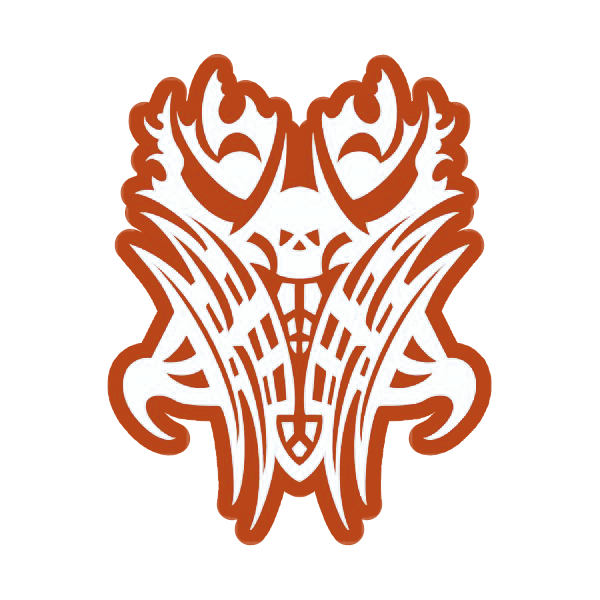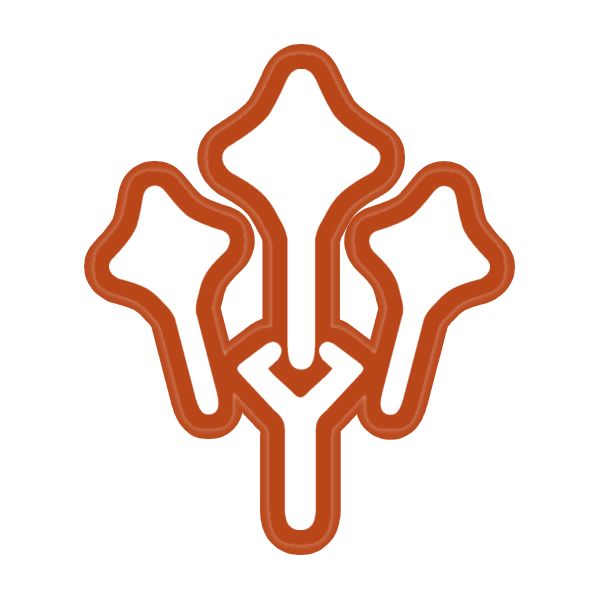Intensity System
This combat system is built upon Intensity as a concept. While, at times, victory is won before swords are drawn, it’s often that a battle is dictated by the flow of emotions. Aether is weaved, Dynamis rises and tempers flare as swords clash.This system is designed to provide an avenue for DMs to be as creative as possible while having defined rules for the players to follow. As such, if something is not covered here, it is up to YOUR discretion! Be creative.Anyroad Free Company Combat System
Brought to you by its Seneschals: Kuro, Kirion, and Adyos

Combat Basics
ㅤㅤㅤTurns
Combat is dictated by turns. A turn is a temporal unit within which actions are taken. They can last an indefinite amount of time (default) or have a time limit imposed upon them by the DM.In general, turns are divided into “Player Turns” and “DM Turns”. Within player turns, the participants are allowed to roll for and, according to the result, emote whatever actions they wish to take. Within DM turns, the event holder (or helper) will take the time to reply to individual emotes by describing environmental, boss, enemy, and miscellaneous events and actions.As for the specifics of a player’s obligations, rolls and so forth, please see the rest of the carrd!
ㅤㅤㅤ
Intensity
Along with turns, the intensity level makes up the fundamental groundwork of this system. There are three intensity levels (seen below), wherein both timing and level of increase are entirely at the DMs discretion.The intensity system is a way for the system to showcase the ebb and flow of battle. As combat continues, the body and mind fatigues but the soul burns ever brighter. Through the fire that is your will, you battle against the odds and, thus, the intensity of attacks - both for you and your enemies - increases.FIRST INTENSITY: 1-25
SECOND INTENSITY: 1-50
MAX INTENSITY: 1-100For a variation of this intensity system: the Variable Intensity System; please visit the DM Tools page.
Types of Action
The final concept to be understood is that of action types. At its core, this system recognizes three types of actions:
- Free Actions
- Combat Actions
- Dynamis ActionsFree Actions are normally done outside of combat but can also be supported within combat. They do not take any resources and may or may not require a roll of their own. As their name implies, free actions are done freely by players and may or may not incur a reaction from whatever or whoever they may be interacting. They should always be matched with a response from the DM, even if it’s to say that the action was useless.Examples of free actions include: investigating an area, object, person or whatever else; passive perception; passive use of an ability or skill, not requiring a roll; skill checks; and whatever else you think would qualify the above criteria.Combat Actions are actions done within the scope of combat and encompass attacking an enemy or defending against an attack. Combat Actions are reliant on combat rolls and symbolize an attack that either raises or lowers the health of an entity through direct or indirect means. (*AOE actions are per DM discretion)Dynamis Actions are special events that only happen during combat and are generally used to delineate any and all actions by which a player may permanently change the battlefield. This may be inflicting a debuff upon the enemy, distributing a special buff not covered by combat actions upon one or multiple allies, interacting with the environment or even just doubling one’s damage. Due to the nature of Dynamis Actions, their effect may be guaranteed, may require a roll or even require a difficulty check.

Combat Rolls
Player Base Health: 50 HP.
Damage is determined by the roll of a dice equal to the intensity level.
(/dice 25, 50 or 100)
DM Turn:
During a DM’s turn, enemy attacks may target one or multiple players. In this case, the DM will roll either once as a collective difficulty check against which all players must roll against or individually for each player attacked. If the DC is met, you will take damage, otherwise no health is lost.
Damage to players is dealt during these DM turns. For bosses, it is specifically half of the amount rolled. This means that, as the intensity levels rise, the boss' damage will increase in tandem, placing a higher emphasis on teamwork and mutual support!An example of a DM turn is as follows:Boss rolls 12,
Mirinae rolls 4.
Because the boss rolled 12, Mirinae takes 6 damage.Boss rolls 37,
Kirion rolls 31.
Because the boss rolled 37, Kirion takes 18 damage.Boss rolls 37,
Kuro rolls 38.
Because the boss rolled 37, but Kuro beat the check, he takes no damage!(For Savage and Ultimate fights, the player retaliates with damage equal to the difference between boss and player roll [38-37 = 1dmg])
Addendum: Protecting the Party
Just as there are those whose focus lies solely in inflicting harm upon their enemies or mitigating damage to their allies, there are also those whose focus lies on prevention and protection. These stalwart champions are often a steady wall against the tide of war and serve as a means by which to empower their comrades by keeping them alive.Tanks, as it were, are masters of damage mitigation and often rely on proper stance, discipline and courage to brave the enemy's unrelenting assault.
Intercept (Reaction) - Triggered upon a critical defense or announced by a non-defending player.
Players who, during their defense roll, achieve the maximum possible number for that given intensity level are able to not only shrug off their attack, but intercept someone else’s! An announcement of the player being intercepted is done after all defense dice are cast.
For players that were not targeted by an attack, an interception may also be attempted via an announcement - done before your own dice roll. Only after an announcement is made may you roll your dice. This is treated as a defense roll against that player’s attack.
Failure to achieve the necessary DC will cause both the intercepting player and the original target to take damage. A successful defense will damage only the intervening player, a successful interception will deny both instances of damage.Guard - Forego your combat turn to halve any player turn taken in the following DM turn.
Guard is a defensive ability wherein the player assumes a guard stance, foregoing their player turn. Instead, they use the time to steady their shield, anchor their body, weave protective magicks or conceive a manner by which to negate attacks, allowing them to halve any damage taken the following DM turn.Cover - Forego your combat turn to cover against one of the enemy's attacks. On failure, take full damage but prevent damage to the covered ally.
Cover is a defensive ability wherein the player assumes a ready stance, foregoing their player turn. Instead, they use the time to steady their feelings and tap into their instinct to foresee the enemy's attacks. During the DM's turn, after both boss rolls and defensive rolls have happened, the player chooses their cover target. They must meet or exceed the attack's DC to prevent all damage, taking the damage onto themselves on failure.Vigilance - Strike an enemy for half damage. During the following DM Turn, counter on a successful defense. Cover and Intercept will trigger Vigilance.
Vigilance is a defensive ability wherein the player assumes a assault stance, immediately onslaught an enemy for half of the rolled damage. Additionally, on a successful defense roll, counter the enemy, triggering an onslaught attack. This counter can be triggered not only by the player's own defense roll but also any defense rolls prompted by cover and intercept.
Player Turn:
Player emotes are written only during Player Turns. It is also during these turns that players can roll for damage, healing, shielding or even perform special actions! Should a player choose to attack, they must cast their die onto the field and deal the full damage of their roll, unlike their enemies!
The effectiveness of the attack, the manner in which the attack is made and the reason for it are entirely up to you and your interpretation of your character’s abilities.
The DM will try to read everyone’s emotes yet due to time constraints, emote length and number of players, they may miss crucial parts of your writing that may have had an effect on the boss.
While everything you do is an attempt and no form of permanent maiming is guaranteed, we ask that - if you describe an action meant to somehow have a permanent and notable effect upon the boss, you discuss it with the DM (send him a tell) as it may be classified as a “Dynamis Action”. More on these later!
Player damage is tallied only during a “Player Turn”. After rolling, you are free to emote your attack as you see fit! Furthermore, it is now that you tally up and keep track of your current HP, taking into account any damage taken during the DM turn and healing during player turn.
To aid the DM, we also encourage our players to add the following formula at the end of their emotes: [DMG, HP+SHIELD]
Example:
Mirinae rolls 12.
Mirinae strikes the enemy. [12dmg, 50HP+5]
Addendum: Buffing the Party
There are plenty of character archetypes which focus far more prominently on supporting their allies than directly inflicting harm on their enemies. These so-called “buffers” can find their place within our combat system by translating their spells or abilities into one of these three archetypal actions, defined by a magical and non-magical version.These "buffs" last for a singular Player Turn and are considered a combat action, meaning they take the place of an attack or heal.
Infuse or Assist - Choose a target, adding half of their dice roll to the result. If the action is an attack, also add an extra (5 * Intensity Level).
Infuse is a magical ability wherein the caster bestows power upon their ally, enhancing their weapon, strike or even combat capabilities: physical or magical;Assist is a physical ability wherein the player aids their ally in combat. This can be done by setting up a joint strike, laying a trap, handing a cartridge of magazine and whatever else one can think of.
Hasten or Inspire - Choose a target, allowing them to take an extra combat action that turn.
Hasten is a magical ability wherein the caster imbues an ally with magicks meant to enhance their physical or spellcasting speed.Inspire is a physical ability wherein the player strengthens an ally’s resolve be it through action, song or words alike. This, in turn, allows them to surpass their limits.
Rewind or Analyze - Choose two targets, they may reroll their dice once and use the highest roll.
Rewind is a magical ability by which the caster manipulates a chosen ally, their strike or even their very fate, allowing them a chance at better odds in combat.Analyze is a physical ability encompassing every action meant to aid an ally by identifying a weakness or flaw in the enemy’s being, stance, guard, armor etc. or in an ally’s stance, poise or technique.
A mass assist is also possible when employing prearranged combat tactics or otherwise following a previously set or described plan. These, however, should be discussed with the DM either prior or during the combat encounter and can be taken as a free Dynamis Action or special instance, at the DM’s discretion.

Heals & Shields
Just as there are ways for you to lower an enemy’s HP, there are also tools which will help you undo or even prevent damage done to your allies!
The system recognizes two major paths to damage mitigation: Direct Healing & Shielding and Mass Healing & Shielding; both of which are unable to miss under normal circumstances and are considered a combat action within a Player Turn and a Free Action outside combat.This means that, during combat, you must choose between dealing damage or supporting your allies and only one supportive action can be done per turn.
Direct Healing & Shielding:
Direct Healing and Shielding are both done by casting a die equal to half of the current intensity’s combat roll (/dice 12, 25, 50).Heal: You restore a target’s HP by an amount equal to the result of the dice roll.Shield: You cast a shield on the target equal to the result of the dice roll. This shield lasts until the next player turn.
Mass Healing/Shielding:
Mass Healing and Shielding are both done by casting a die equal to a fourth of the current intensity’s combat roll (/dice 6, 12 or 25). However, unlike a direct supportive action, making use of one or the other incurs a 1 turn cooldown on both.This means that, should you mass heal or shield, you will not be able to perform either action again the next turn.Mass Heal: You restore the HP of all targets within the area by an amount equal to the result of the dice roll.Mass Shield: You cast a shield upon all targets within the area by an amount equal to the result of the dice roll. Like a direct shield, they only last until the next player turn.
Please whisper the player you are healing, or shielding, so they know!
DMs should announce mass healing or shielding at the end of the player turn.
Addendum: Regeneration
A third form of damage mitigation exists, considered a subset of healing, it applies a heal over time effect upon a single target. This effect, called Regeneration allows a bit more control over the amount of healing done per turn. Regeneration effects are unique, meaning only one can be active on each player at a time. Casting a new regeneration effect upon a player will remove the old effect and replace it with the new one without any benefits or detriments.A regeneration effect will always expire at the end of the second turn after it was cast for a total of three heals equal to the result of the healer’s dice roll.First Intensity: The healer casts a /dice 4.
Second Intensity: The healer casts a /dice 8.
Max Intensity: The healer casts a /dice 16.

Dynamis
“Dynamis Action” is a term that describes any and all actions that are not encompassed or covered by our extensive system. They are a way to give the players a degree of freedom within combat, to invent and experiment, to think outside the box and inflict upon environment and boss effects that fall outside the basic ebb and flow of simple combat.
Collaborative Emotion System:
The Emotion System is the system by which our Dynamis Actions operate. When you enter combat, a Dynamis Point is freely given to you - which can be redeemed at any point during that given encounter. These points are non-transitory, meaning they cannot accumulate across encounters should an event host multiple combat encounters.Dynamis Actions, as their name entails, are a reflection of the character's emotions and the manner by which they may otherwise shape or affect the battlefield. Any points awarded to you may be redeemed by outlining a given emote as a Dynamis Action or otherwise by reaching out and contacting the DM in charge. This dialogue is meant to allow the DM to ascertain whether a given action is possible or not, whether it should be allowed outright, a roll done for efficacy, or a difficulty check imposed.This means that any action that falls outside encounter specific mechanics, including attempts at debuffing the boss such as taunting/provoking it, are considered any such Dynamis Actions. This, however, does not mean that your normal emotes cannot be special. This is where the Emotion System comes in. However, the use of this system is generally DM specific and optional. When the Emotion System is not in use, Actions are awarded solely at the discretion of the DM, generally during Intensity Increases.Within the Emotion System, while one is guaranteed only a singular Dynamis Action per encounter, there are ways to organically trigger a Dynamis Action through normal combat. These actions are passive and will not consume any stored points, organically awarded to you by the DM. Generally, their effects are outlined within the DM's reply or otherwise explained to you when triggered.As an example, if a mass shield is cast within the party and a White Mage emotes siphoning aether to empower either a party member or their own attack, then the DM may consider that a Dynamis Action - upon which the shields will be consumed at and each hitpoint taken will be added to the attack.Another such moment lies within Elemental Synergies, where wreathing someone in lightning only to have another party member douse them in water may trigger a custom state of some kind.Additionally, on top of these Dynamis Moments, further Dynamis Points may be awarded as a result of meeting certain conditions. Examples of these conditions are as follows:
- Exploitation of a pre-established boss vulnerability.
- A character moment which gives rise to character emotionality.
- A party-wide morale boost.
And other relevant criteria. This means that a Dynamis Point may be awarded to you by the DM if they recognize it as fitting, awarded to the party where necessary, or more importantly, may be requested by the Player when they believe it fitting. This, however, does mean that you should be prepared with a SUCCINCT explanation as to why this is the case, should the DM ask for it.

DM Tools
Tools for you, the Dungeon Master. Calculations and more, more to come, as well.
Variable Intensity System:
The Variable Intensity System (VIS) is an addendum to the standard system that allows for non-linear and non-global variations of the Intensity System. It was conceived as a way to punctuate events and battles that may be far more perilous or otherwise unpredictable than your average encounter. It doesn't require an announcement or any specific modifications as it operates much like the normal intensity system.The delineation between VIS and Standard comes from a disconnect between the party's intensity and the enemies' intensity. Another hallmark of the VIS is the ability for intensity to fluctuate, as exemplified below. As this system is meant to reflect a far more chaotic and volatile field of battle where emotions and abilities run high and mighty, the player's abilities or the DM's abilities may increase or decrease both their own or the other party's intensity. Moldable by actions taken, reflecting the swelling of emotions, the waning of morale, or the manner in which a battlefield changes - this system makes encounters far more dynamic and unpredictable.If the enemies employ some manner of desperate struggle, their intensity might increase to three for a given round and then immediately decrease to one or even zero. Similarly, if the enemy employs something akin to a smokescreen, it might force the party to intensity zero, as they cannot attack the enemies.What is intensity 0?
Intensity 0 is a custom intensity level that reflects an inability to attack. Depending on the DM, further restrictions may apply, but it's primarily meant to convey an obstruction to offensive capabilities. During Intensity 0, unless otherwise specified, the party can only use support, defensive, healing, or dynamis actions with all of them being rolled as an intensity mandated by the DM, typically one.
Boss Math:
Determining health of a boss before encounter.1 hp (Trash mobs)
15 x Number of Players X Expected turns = Boss HP. (First Intensity Bosses)
20 x Number of Players X Expected turns = Boss HP. (Second Intensity Bosses)
30 x Number of Players X Expected turns = Boss HP. (Max Intensity Bosses)
Boss Attacks:
Bosses can attack a bunch of players at once, doesn't have to be just one or two. Bosses can also use their Dynamis actions to lay out flat damage across the field, and this could be added to an attack. You can also deal damage to the whole party as well, and it doesn't have to be a partybuster. It can deal normal damage
Boss Damage:
Boss damage is half of what the boss rolls on each intensity.
You still need to roll out of 25, 50, then 100. This will help negate counter damage depending on how the boss rolls.
1-12 – Intensity 25
1-25 – Intensity 50
1-50 – Intensity 100
Enemy Dynamis:
Just as the players feel the stakes increase as the battle progresses, so too do their enemies. Each enemy encounter is equipped with two “Dynamis Actions” which, just like the players, refresh upon Intensity increase!Enemy “Dynamis Actions” are the DM’s tool to apply pressure upon the player party. Some examples of these actions include: Summons, Tankbuster, Partybuster and Partyquake; but can also extend to any and all wildcard attacks that the DM wishes to employ.
Tankbuster:
The enemy targets one or multiple players, forcing each and every one of them to roll against multiple attacks. These attacks, generally, deal a significant portion of the player’s HP but can be blocked by achieving a high-enough defense roll.
Partybuster:
The enemy targets the entire party, rolling a single attack multiplied by the number of players in the party. The players must then achieve a collective defense roll above the enemy’s attack or watch as the entire party suffers the consequences of failure. Much like the Tankbuster, this attack generally deals a substantial portion of the player’s max health.
Partyquake:
The enemy rolls a single attack roll and causes every party member to automatically take an amount of damage equal to that dice roll!These are all just examples of what enemy “Dynamis Actions” may look like. In the end, it is all down to the DM’s discretion, imagination and what they have planned with the fight.

Dueling Ultimate
What is Dueling?
Dueling denotes any form of combat that takes place between two consenting players. Whether it be for the purpose of tournaments or purely due to a battle occurring between two player-controlled characters, this system provides an in-depth alternative that may be used in lieu of freeform combat, given that the players both agree to resort to this system.
This will also be the default system for: Important duels, bossfights, or other story events that have one player going up against another player or threat alone.
Emoting:
Emoting should be done as the conclusion between fulfilled rolls. An emote on either side should denote the start of the fight, allowing the players to roll initiative. Emotes are then written after every turn is concluded with the following exceptions:
- Players should emote the start of a special combat state.
- Players should emote the end of a special combat state.
Player Health:
5 HP. Healing and Recovery is not possible unless agreed upon for IC reasons.
Initiative:
Whereupon both players agree to make use of the dueling system or once dueling has officially commenced, both players will d20 for initiative. The higher roll gets to attack first unless both players agree to manually gift the initiative due to IC circumstances.
Rounds and Turns:
Each round is split into 2 turns, with the possibility for special combat states. These combat states are optional modules and the players may choose to toggle them on or off depending on what they find enjoyable.
By default, each round will contain one attack turn and one defense turn for each player. However, special combat states can elongate these turns and modify them.
Attack and Defense:
As stated previously, the player who rolled the highest initiative gets to attack first.
Attack rolls are a simple d20, as is the defense roll. Here are the possible
combinations:
- Attacker wins: 1 damage is dealt to the defender.
- Attacker wins and rolls 20: 2 damage is dealt to defender.
- Defender wins: No damage is taken by defender.
- Defender wins and rolls 20: Special Combat State: Retaliation.
- The rolls are within 1 of eachother or tied: Special Combat State: Clash.
Retaliation:
Retaliatory strikes, or retaliation is a special combat state in which a defender is allowed an attack of opportunity upon the attacker. Think of it as a parry. The two players now roll as if the defender became the attacker, these combinations are possible:
- Defender wins: 1 damage is dealt to attacker.
- Attacker wins: No damage is taken by either party.
- Rolls tie: No damage is taken by either party.
Clash:
A state of clash, or clashing, is a special combat state in which the characters become engaged in a tug of war between one another. This state is decided by a best out of 3 rolls. Each player rolls 3 d20's. Whoever wins 2 of those 3 rolls wins the clash. This simulates back-and-forth.
If no winner of the best out of 3 can be concluded, then the clash is broken without a clear winner, and no damage is dealt. The fight continues as normal.
Winning the clash results in one of these following states:
If the attacker wins the clash, they deal 1 damage and engage in another attack turn.
If the defender wins the clash, they deal 1 damage to the attack and then engage their own attack turn.

Dueling Casual
What is casual Dueling?
Casual Dueling denotes any duel (explained in Dueling (Ultimate)) which may
need expediency for one reason or another.
Player Health:
3 HP. Healing and Recovery is not possible.
Attack and Defense:
Initiative does not exist in this combat system, nor does the idea of rounds, turns, combat states, or critical hits. Players engage in rolls against one another, and ties incur a reroll.
Whoever wins the roll attacks and deals damage to the other player, there is no attacker and defender, they are both at the mercy of each and every roll.
This repeats until one player hits 0 HP and loses.
Emotes are written after each pair of rolls to see who did the damage, and who took the damage.